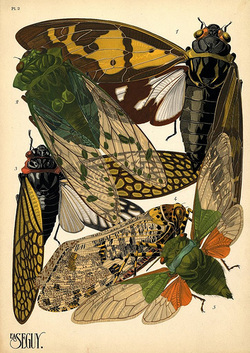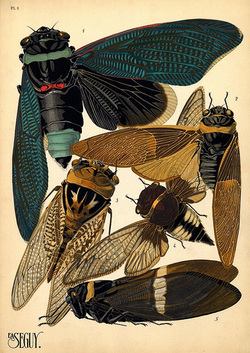CICADA
THE POETRY OF DIOSCORUS
OF APHRODITO
IN ENGLISH TRANSLATION
The Critical Edition
OF APHRODITO
IN ENGLISH TRANSLATION
The Critical Edition
In Greek literature and the poetry of Dioscorus, the cicada was a symbol
of the poet, prophet, and philosopher.
Here, cicadae by Eugene Alain Seguy
(1889-1985).
of the poet, prophet, and philosopher.
Here, cicadae by Eugene Alain Seguy
(1889-1985).
These are the oldest surviving poems written by the hand of a known poet. Dioscorus’s sixth-century manuscripts, with revisions and corrections, were discovered on papyrus in 1905 beneath the village of Kom Ishqaw, Egypt (also called Kom Ashkaw, the modern site of ancient Aphrodito). The manuscripts are now held in museums and libraries around the world. Although Dioscorus was an Egyptian, he composed his poetry in Greek, the cultural language of the Byzantine Era. This critical edition begins with one of Dioscorus’s masterpieces, Hymn to St. Theodosius, a spiritual allegory.
Text © 2011 Clement Kuehn.
All rights reserved.
Photographs of Antinoöpolis
© 2011 Clement Kuehn.
All rights reserved.
Photographs of papyri
© 2011 Adam Bülow-Jacobsen.
All rights reserved.
The unaltered reproductions
of Byzantine artwork
are in the public domain.
This site and all its content
are intended solely for
educational, not-for-profit purposes.
Last update: 23 October 2016


